- Accueil
- Pages cachées
- 21 AVRIL 2024 NEWS
21 AVRIL 2024 NEWS
INSTITUT SUPERIEUR D'ANTHROPOLOGIE
INSTITUT OF ANTHROPOLOGY
COURS ONLINE – COURS A DISTANCE
INSCRIPTIONS OUVERTES
REGISTER NOW
ITALIE – 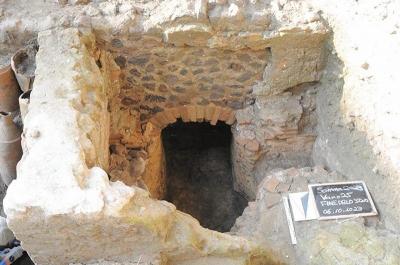 Somma Vesuviana - Researchers from the University of Tokyo have discovered a nearly 2,000-year-old building at a site with ancient Roman ruins buried in volcanic ash in southern Italy. The team believes it could have been a villa owned by the first Roman Emperor, Augustus (63 B.C.—A.D. 14). The team, led by Mariko Muramatsu, a professor of Italian studies, began excavating the Somma Vesuviana ruins on the northern side of Mount Vesuvius in the Campania Region in 2002. According to accounts from antiquity, Augustus passed away at his villa northeast of Mount Vesuvius, and a memorial was subsequently built there in memory of his accomplishments. But the precise location of that villa remained a mystery. Researchers from the University of Tokyo have uncovered part of a structure that was used as a warehouse. A wall of the building had dozens of amphora ceramic containers arranged in a row. Additionally, they discovered the ruins of what was probably a furnace that was used to heat the bath. Part of the wall had collapsed, scattering ancient roof tiles along the floor. Carbon dating of carbon from the furnace found that most samples were from around the first century. Researchers say nothing was dating back to the following period and they believe the kiln was no longer used afterward. The researchers say there is a possibility that the building was the emperor’s villa because it had a private bath, which was installed in the residence of an influential figure. They also say the bath was out of use around the same time when Augustus died and what appeared to be a large temple was later constructed on the site. The volcanic pumice covering the ruins was found to have originated from the pyroclastic flow of lava, rocks, and hot gases from Mount Vesuvius’ eruption in 79, according to a chemical composition analysis carried out by the team. Pompeii on the mountain’s southern slope was completely destroyed by that same eruption.
Somma Vesuviana - Researchers from the University of Tokyo have discovered a nearly 2,000-year-old building at a site with ancient Roman ruins buried in volcanic ash in southern Italy. The team believes it could have been a villa owned by the first Roman Emperor, Augustus (63 B.C.—A.D. 14). The team, led by Mariko Muramatsu, a professor of Italian studies, began excavating the Somma Vesuviana ruins on the northern side of Mount Vesuvius in the Campania Region in 2002. According to accounts from antiquity, Augustus passed away at his villa northeast of Mount Vesuvius, and a memorial was subsequently built there in memory of his accomplishments. But the precise location of that villa remained a mystery. Researchers from the University of Tokyo have uncovered part of a structure that was used as a warehouse. A wall of the building had dozens of amphora ceramic containers arranged in a row. Additionally, they discovered the ruins of what was probably a furnace that was used to heat the bath. Part of the wall had collapsed, scattering ancient roof tiles along the floor. Carbon dating of carbon from the furnace found that most samples were from around the first century. Researchers say nothing was dating back to the following period and they believe the kiln was no longer used afterward. The researchers say there is a possibility that the building was the emperor’s villa because it had a private bath, which was installed in the residence of an influential figure. They also say the bath was out of use around the same time when Augustus died and what appeared to be a large temple was later constructed on the site. The volcanic pumice covering the ruins was found to have originated from the pyroclastic flow of lava, rocks, and hot gases from Mount Vesuvius’ eruption in 79, according to a chemical composition analysis carried out by the team. Pompeii on the mountain’s southern slope was completely destroyed by that same eruption.
Japan Researchers Uncover Lost Villa Believed to Belong to First Roman Emperor - Arkeonews
HONGRIE – Zamárdi-Kútvölgyi-dűlő II - Archaeologists have discovered the skeleton of an adult male lynx accompanied by four big dogs in a Roman-era pit in the Zamárdi-Kútvölgyi-dűlő II area in Hungary. In addition to being unusual, it is the only complete archeological lynx skeleton ever discovered in Europe. There is no doubt that the Eurasian lynx, or Lynx lynx, is the most magnificent cat species in all of Europe. Although its range is vast across the continent, the only signs of its presence in human culture are typically found in the form of claws and pelts, which are most likely artifacts or clothing that belonged to prehistoric peoples. There are only a few examples recovered from sites in Hungary and the Netherlands, and these previous finds are incomplete. A new archeological study details a truly strange burial—dating around the fifth or sixth century CE—that includes four dogs and lynx. Analysis of the skeletons revealed that the lynx was comparable in size to the large dogs with which it was buried, albeit slightly smaller than the “elite” large dogs discovered in high-status Lombard graves at the time. The remains were found in a 1.4-meter (4.6-foot) deep pit and were positioned at the bottom, with the dogs (two male and two female) on top. The details of the find were published last month in the journal in International Journal of Osteoarchaeology. Working with a colleague from Stockholm University, the archaeologists from the Institute of Archaeology, HUN-REN Research Center for the Humanities in Hungary note in their study that the animals do not appear to have been arranged with any purpose. “Although the physical reconstruction of the lynx was of help in appraising this special pit, the actual nature of the deposit remains in question,” the paper reads. “Possible interpretations range from the mundane discard of carcasses to the poorly understood ritual burial of carnivores, beginning with the lynx.”
A Lynx Buried with Four Big Dogs in an Ancient Roman Well in Hungary - Arkeonews
ARABIE SAOUDITE - 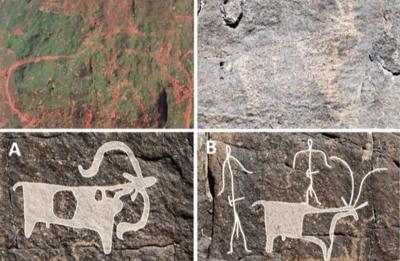 Umm Jirsan - A large tube produced by lava – molten rock (magma) that had been expelled from the interior of the earth – in the Umm Jirsan cave in northern Saudi Arabia provided valuable shelter for humans herding livestock over at least 7,000 years from the Neolithic through to the Chalcolithic/Bronze Age 10,000 to 3,500 years ago. Research over the last decade has highlighted a diverse Holocene archaeological record, but the timing of human occupations and their connections with the nearby Levant remain poorly understood, primarily due to poor preservation of organic remains in the region’s arid conditions. To get around this problem, archaeologist Dr. Mathew an archaeologist at Australia’s Griffith University and Germany’s Max Planck Institutes of Geoanthropology and colleagues focused investigations on caves and other underground settings where ancient materials are sheltered from sun, wind and high fluctuations in temperature. They analyzed an archaeological site from a lava tube located in the volcanic field of Harrat Khaybar in Saudi Arabia about 125 kilometers north of Medina. The team that included scientists from the US, Europe and Australia has just been published in the journal PLoS ONE under the title “First evidence for human occupation of a lava tube in Arabia: The archaeology of Umm Jirsan Cave and its surroundings.” Within the lava tube, they found artifacts, rock art, and skeletal remains that documented repeated human occupation over at least seven millennia. The lava tube seems to have been an important resource for pastoralists keeping and herding livestock, as evidenced by rock art and animal bones representing domesticated sheep and goats. Isotopic analysis of human remains reveals an increase over time in plants such as cereal and fruit in the diet, possibly linked to a rise in oasis agriculture in the Bronze Age. The authors believe that Umm Jirsan was likely not a permanent home, but instead a valuable stopping point for people traveling among oasis settlements. Lava tubes and other natural shelters were valuable resources for communities surviving in a challenging environment, and with further investigation, they present a key source of archaeological information about the history of human occupation in Arabia. Humans lived sporadically in the area, when there was an improved, drier climate. “Our findings provide a rare glimpse into the lives of ancient peoples in Arabia, revealing repeated phases of human occupation and shedding light on the pastoralist activities that once thrived in this landscape,” said Stewart. “This site likely served as a crucial waypoint along pastoral routes, linking key oases, and facilitating trade and cultural exchanges.” Herb-eating mammals grazed mostly on wild grasses and shrubs rather than being provided with fodder, while humans had a diet consistently high in protein but with increasing consumption of plants, perhaps related to the emergence of oasis agriculture. “The proliferation of archaeological sites in the Holocene era has been interpreted as reflecting population growth in the region, spurred by the onset of the Holocene Humid Period at around 10,600 years before the present. This was followed by the introduction of domestic livestock, and later by the development of water-harnessing technologies (such as wells and dams) and oasis agriculture in the Bronze Age, when arid conditions returned. Many of the features that define the Neolithic elsewhere, such as sedentism, pottery, and agriculture, are notably absent from northern Arabia until the Bronze Age,” they concluded.
Umm Jirsan - A large tube produced by lava – molten rock (magma) that had been expelled from the interior of the earth – in the Umm Jirsan cave in northern Saudi Arabia provided valuable shelter for humans herding livestock over at least 7,000 years from the Neolithic through to the Chalcolithic/Bronze Age 10,000 to 3,500 years ago. Research over the last decade has highlighted a diverse Holocene archaeological record, but the timing of human occupations and their connections with the nearby Levant remain poorly understood, primarily due to poor preservation of organic remains in the region’s arid conditions. To get around this problem, archaeologist Dr. Mathew an archaeologist at Australia’s Griffith University and Germany’s Max Planck Institutes of Geoanthropology and colleagues focused investigations on caves and other underground settings where ancient materials are sheltered from sun, wind and high fluctuations in temperature. They analyzed an archaeological site from a lava tube located in the volcanic field of Harrat Khaybar in Saudi Arabia about 125 kilometers north of Medina. The team that included scientists from the US, Europe and Australia has just been published in the journal PLoS ONE under the title “First evidence for human occupation of a lava tube in Arabia: The archaeology of Umm Jirsan Cave and its surroundings.” Within the lava tube, they found artifacts, rock art, and skeletal remains that documented repeated human occupation over at least seven millennia. The lava tube seems to have been an important resource for pastoralists keeping and herding livestock, as evidenced by rock art and animal bones representing domesticated sheep and goats. Isotopic analysis of human remains reveals an increase over time in plants such as cereal and fruit in the diet, possibly linked to a rise in oasis agriculture in the Bronze Age. The authors believe that Umm Jirsan was likely not a permanent home, but instead a valuable stopping point for people traveling among oasis settlements. Lava tubes and other natural shelters were valuable resources for communities surviving in a challenging environment, and with further investigation, they present a key source of archaeological information about the history of human occupation in Arabia. Humans lived sporadically in the area, when there was an improved, drier climate. “Our findings provide a rare glimpse into the lives of ancient peoples in Arabia, revealing repeated phases of human occupation and shedding light on the pastoralist activities that once thrived in this landscape,” said Stewart. “This site likely served as a crucial waypoint along pastoral routes, linking key oases, and facilitating trade and cultural exchanges.” Herb-eating mammals grazed mostly on wild grasses and shrubs rather than being provided with fodder, while humans had a diet consistently high in protein but with increasing consumption of plants, perhaps related to the emergence of oasis agriculture. “The proliferation of archaeological sites in the Holocene era has been interpreted as reflecting population growth in the region, spurred by the onset of the Holocene Humid Period at around 10,600 years before the present. This was followed by the introduction of domestic livestock, and later by the development of water-harnessing technologies (such as wells and dams) and oasis agriculture in the Bronze Age, when arid conditions returned. Many of the features that define the Neolithic elsewhere, such as sedentism, pottery, and agriculture, are notably absent from northern Arabia until the Bronze Age,” they concluded.
First evidence for human occupation of a lava tube in Arabia - The Jerusalem Post (jpost.com)
TURQUIE – 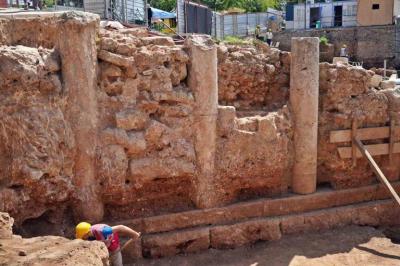
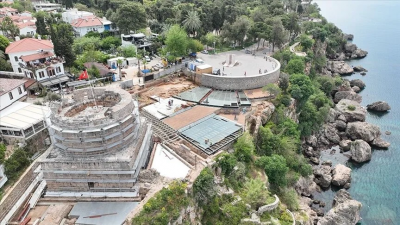 Antalya - During the archaeological excavations in Hıdırlık Tower, one of the historical symbols of Antalya, the famous holiday resort in the south of Turkey, an 800-metre-long colonnaded street of the Roman period was discovered. Hıdırlık Tower (Turkish: Hıdırlık Kulesi) is one of the oldest surviving monuments of the city of Antalya, where Kaleiçi meets Karaalioğlu Park. It is built of yellow-brown, stone blocks. Its lower story was erected on the square plan at the turn of the 2nd century AD as a part of the city fortifications. Soon, in the 2nd century, the second story was added, this time on the circular plan. During the Seljuk and Ottoman periods, the upper part of the building underwent extensive renovations. The function of this structure still remains a mystery. The consensus is that the tower was once the tomb of a significant figure. The pieces of preserved frescoes inside the building support this theory. Furthermore, stylized axe carvings on both sides of the entrance gate may allude to the significance of the person interred there. Within the scope of the project carried out under the supervision of the Antalya Museum Directorate, while the conservation works of the historical remains continue, archaeological excavations continue meticulously. Finally, a colonnaded street that will shed light on history was unearthed in the southern part of the tower.
Antalya - During the archaeological excavations in Hıdırlık Tower, one of the historical symbols of Antalya, the famous holiday resort in the south of Turkey, an 800-metre-long colonnaded street of the Roman period was discovered. Hıdırlık Tower (Turkish: Hıdırlık Kulesi) is one of the oldest surviving monuments of the city of Antalya, where Kaleiçi meets Karaalioğlu Park. It is built of yellow-brown, stone blocks. Its lower story was erected on the square plan at the turn of the 2nd century AD as a part of the city fortifications. Soon, in the 2nd century, the second story was added, this time on the circular plan. During the Seljuk and Ottoman periods, the upper part of the building underwent extensive renovations. The function of this structure still remains a mystery. The consensus is that the tower was once the tomb of a significant figure. The pieces of preserved frescoes inside the building support this theory. Furthermore, stylized axe carvings on both sides of the entrance gate may allude to the significance of the person interred there. Within the scope of the project carried out under the supervision of the Antalya Museum Directorate, while the conservation works of the historical remains continue, archaeological excavations continue meticulously. Finally, a colonnaded street that will shed light on history was unearthed in the southern part of the tower.
GUATEMALA – 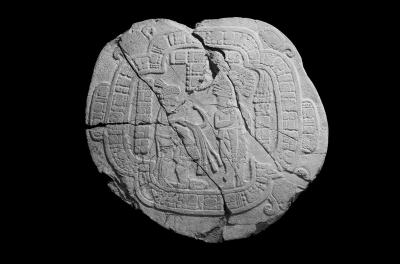
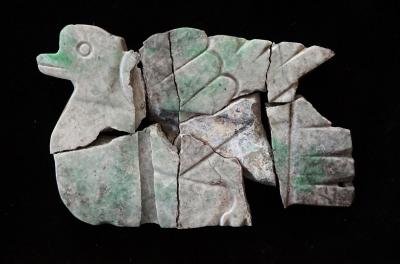 Ucanal - In 2022, Christina Halperin was excavating a pile of rubble in a Maya pyramid at a Guatemalan site called Ucanal. As she sorted through thousands of shattered greenstones, seashells, and obsidian pieces, she noticed something peculiar. “This soil was so sooty and full of carbon,” the University of Montreal archaeologist recalls. “You couldn’t excavate … you couldn’t be clean.” Now, her team knows what the dense, sooty debris was made of: the burnt bones of ancient Maya royalty and their ornaments. In a paper published today in Antiquity, the researchers describe the unusual burning event, which was dated to about 1200 years ago. The work offers rare archaeological evidence, they say, of a ritual meant to wipe out the relics of bygone rulers. It reflects a time of political turmoil that eventually led to the collapse of the Classic Maya era in the region. “The burning of human remains to erase [the memory of a Maya] dynasty, with all its ornaments—I have not seen that before,” says Francisco Estrada-Belli, an archaeologist who studies Maya culture at Tulane University and was not involved in the new research. Ancient Maya glyphs trace the history of Ucanal in northern Guatemala. In the Late Classic period, from 600 C.E. to 800 C.E., the city was the capital of the K’anwitznal kingdom in the southern Maya lowlands. According to glyphs found in contemporary Maya sites nearby, a new ruler with a strange name appeared at the capital around 810 C.E., in the early Terminal Classic period. He apparently was not local; his name, Papmalil, is derived from either Nahua, spoken in central Mexico, or Chontal Maya, spoken more than 500 kilometers northwest of Ucanal along the Gulf Coast. He built monuments using stones from previous buildings, burying the symbols of earlier regimes. Glyphs from other Maya sites mention Papmalil’s involvement in wars and alliances from 814 C.E. to 859 C.E. For example, an altar found at the nearby site of Caracol shows Papmalil exchanging gifts with the local ruler in 820 C.E.To learn more about the K’anwitznal capital’s history, Halperin and her team excavated a temple pyramid there, which she says looked like a 15-meter-high, vegetation-covered mountain. Pyramids in ancient Mesoamerica were usually built in phases over time. When the team excavated the penultimate phase of the Ucanal pyramid, they found a burnt deposit in the construction fill, including a concentration of bones and pieces of ornaments. In the lab, the researchers determined the bone fragments belonged to four individuals—two young adult males, an older adult male, and another individual whose gender or age the researchers couldn’t establish. The bones of two individuals had been damaged by high temperatures. “The burning … was at such a high temperature that it suggests a huge fire,” Halperin says. Some remains had been burned at more than 800°C. Along with the bones, the researchers found 1470 fragments of greenstone pendants, beads, plaques, and mosaics. They also found about 40 obsidian objects, more than 10,000 marine shell beads, ceramic ornaments, pyrite, and a pendant made of a mammal’s teeth. Most of the ornaments showed damage from burning. Some had exploded into many fragments because of the high temperatures, but the researchers were able to reconstruct a few, such as a greenstone bird figurine, a mask with two polished obsidian eyes, and a greenstone carved diadem. The greenstone ornaments are typical of the Late Classic period and the mask and diadem are known to be exclusive to Maya royalty. With a microscope, the researchers also found a rust reddish pigment on the ornaments—likely cinnabar or hematite that were sprinkled or painted on the bodies of deceased royals as part of burial rites. Taken together, the researchers say, the evidence suggests these individuals were Maya royalty from the Late Classic period. Although such burial rites were familiar to Halperin, the burning suggests an unusual event. “Normally, if you have something as sacred as human remains … of a royal individual and all of their ornamentation—which is really an extension of themselves—you’re going to treat it in a very reverential way,” she says. The conflagration happened between 773 C.E. and 881 C.E., according to radiocarbon dating of charcoal, which fits with the styles of the ceramics at the site. Radiocarbon dating of one of the individual’s bones suggests they died slightly earlier, around 660 C.E. to 775 C.E. The remains of the Late Classic Maya rulers and their ornaments were taken from a still-unknown tomb, burned elsewhere, then deposited on the pyramid as its newest phase was being constructed—all to mark Papmalil’s ascension to leadership, the researchers concluded. The team suggests this was a fire-entering ceremony, or och-i k’ak’ t-u-muk-il (translating to “the fire entered his/her tomb”), a public display of the destruction of a previous K’anwitznal dynasty and a powerful symbol of political change. “It really marks a new political era,” Halperin says. The researchers hope future isotope research will reveal the burnt royals’ identities. The researchers make a good case for their scenario, Estrada-Belli says. Texts from the Maya Classic period describe such burning rituals to venerate dynastic relatives or to mark political ruptures. In Piedras Negras, a Maya site west of Ucanal, archaeologists have found evidence that a ruler re-entered a tomb of a previous leader, burned the remains, and destroyed the tomb contents. But the burning at Ucanal, “is more symbolic. … This is different,” Estrada-Belli says. “It’s about closing a chapter and starting a new one.” “All this data is an open window,” into the past, adds co-author and archaeology technician Marta Perea Carrera of the University of San Carlos of Guatemala. “This event is significant within the Mayan area and story.” It may offer clues to the wider collapse of the Classic Maya, often attributed to climate change, Estrada-Belli says. “This is a very clear rupture with the dynasties of the Classic period,” he says. “It could’ve been one of the causes that contributed to the decline of those dynasties” across the Maya world.
Ucanal - In 2022, Christina Halperin was excavating a pile of rubble in a Maya pyramid at a Guatemalan site called Ucanal. As she sorted through thousands of shattered greenstones, seashells, and obsidian pieces, she noticed something peculiar. “This soil was so sooty and full of carbon,” the University of Montreal archaeologist recalls. “You couldn’t excavate … you couldn’t be clean.” Now, her team knows what the dense, sooty debris was made of: the burnt bones of ancient Maya royalty and their ornaments. In a paper published today in Antiquity, the researchers describe the unusual burning event, which was dated to about 1200 years ago. The work offers rare archaeological evidence, they say, of a ritual meant to wipe out the relics of bygone rulers. It reflects a time of political turmoil that eventually led to the collapse of the Classic Maya era in the region. “The burning of human remains to erase [the memory of a Maya] dynasty, with all its ornaments—I have not seen that before,” says Francisco Estrada-Belli, an archaeologist who studies Maya culture at Tulane University and was not involved in the new research. Ancient Maya glyphs trace the history of Ucanal in northern Guatemala. In the Late Classic period, from 600 C.E. to 800 C.E., the city was the capital of the K’anwitznal kingdom in the southern Maya lowlands. According to glyphs found in contemporary Maya sites nearby, a new ruler with a strange name appeared at the capital around 810 C.E., in the early Terminal Classic period. He apparently was not local; his name, Papmalil, is derived from either Nahua, spoken in central Mexico, or Chontal Maya, spoken more than 500 kilometers northwest of Ucanal along the Gulf Coast. He built monuments using stones from previous buildings, burying the symbols of earlier regimes. Glyphs from other Maya sites mention Papmalil’s involvement in wars and alliances from 814 C.E. to 859 C.E. For example, an altar found at the nearby site of Caracol shows Papmalil exchanging gifts with the local ruler in 820 C.E.To learn more about the K’anwitznal capital’s history, Halperin and her team excavated a temple pyramid there, which she says looked like a 15-meter-high, vegetation-covered mountain. Pyramids in ancient Mesoamerica were usually built in phases over time. When the team excavated the penultimate phase of the Ucanal pyramid, they found a burnt deposit in the construction fill, including a concentration of bones and pieces of ornaments. In the lab, the researchers determined the bone fragments belonged to four individuals—two young adult males, an older adult male, and another individual whose gender or age the researchers couldn’t establish. The bones of two individuals had been damaged by high temperatures. “The burning … was at such a high temperature that it suggests a huge fire,” Halperin says. Some remains had been burned at more than 800°C. Along with the bones, the researchers found 1470 fragments of greenstone pendants, beads, plaques, and mosaics. They also found about 40 obsidian objects, more than 10,000 marine shell beads, ceramic ornaments, pyrite, and a pendant made of a mammal’s teeth. Most of the ornaments showed damage from burning. Some had exploded into many fragments because of the high temperatures, but the researchers were able to reconstruct a few, such as a greenstone bird figurine, a mask with two polished obsidian eyes, and a greenstone carved diadem. The greenstone ornaments are typical of the Late Classic period and the mask and diadem are known to be exclusive to Maya royalty. With a microscope, the researchers also found a rust reddish pigment on the ornaments—likely cinnabar or hematite that were sprinkled or painted on the bodies of deceased royals as part of burial rites. Taken together, the researchers say, the evidence suggests these individuals were Maya royalty from the Late Classic period. Although such burial rites were familiar to Halperin, the burning suggests an unusual event. “Normally, if you have something as sacred as human remains … of a royal individual and all of their ornamentation—which is really an extension of themselves—you’re going to treat it in a very reverential way,” she says. The conflagration happened between 773 C.E. and 881 C.E., according to radiocarbon dating of charcoal, which fits with the styles of the ceramics at the site. Radiocarbon dating of one of the individual’s bones suggests they died slightly earlier, around 660 C.E. to 775 C.E. The remains of the Late Classic Maya rulers and their ornaments were taken from a still-unknown tomb, burned elsewhere, then deposited on the pyramid as its newest phase was being constructed—all to mark Papmalil’s ascension to leadership, the researchers concluded. The team suggests this was a fire-entering ceremony, or och-i k’ak’ t-u-muk-il (translating to “the fire entered his/her tomb”), a public display of the destruction of a previous K’anwitznal dynasty and a powerful symbol of political change. “It really marks a new political era,” Halperin says. The researchers hope future isotope research will reveal the burnt royals’ identities. The researchers make a good case for their scenario, Estrada-Belli says. Texts from the Maya Classic period describe such burning rituals to venerate dynastic relatives or to mark political ruptures. In Piedras Negras, a Maya site west of Ucanal, archaeologists have found evidence that a ruler re-entered a tomb of a previous leader, burned the remains, and destroyed the tomb contents. But the burning at Ucanal, “is more symbolic. … This is different,” Estrada-Belli says. “It’s about closing a chapter and starting a new one.” “All this data is an open window,” into the past, adds co-author and archaeology technician Marta Perea Carrera of the University of San Carlos of Guatemala. “This event is significant within the Mayan area and story.” It may offer clues to the wider collapse of the Classic Maya, often attributed to climate change, Estrada-Belli says. “This is a very clear rupture with the dynasties of the Classic period,” he says. “It could’ve been one of the causes that contributed to the decline of those dynasties” across the Maya world.
Charred bones are signs of Maya ritual to erase past rulers | Science | AAAS
SUEDE – 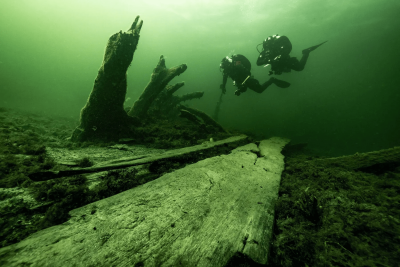
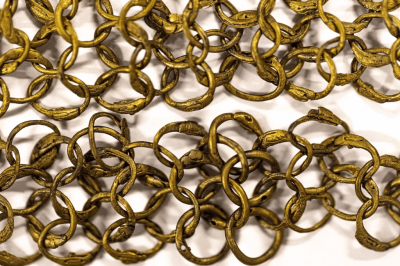 - An extensive exploration of the wreck of the royal flagship Gribshunden has unearthed a trove of new findings: new insights into combat platforms of warships and a unique weapon chest from the Late Middle Ages. The Gribshunden (also known as Griffin or Griffin-Hound) was the flagship of King John I of Denmark (1481–1513), ruler of the Kalmar Union. In 1495, the Danish warship Gribshunden sank off the coast of Sweden. The wreck was discovered in the 1970s by recreational divers but not disclosed to researchers until the year 2000. The most recent fieldwork on the wreck occurred in May of last year. The research team, led by Professor Johan Rönnby of Södertörn University and PhD candidate Rolf Warming of Stockholm University, used underwater cameras and photogrammetric 3D technology to inspect and document additional parts of the ship’s remains. Highlights of the research include the discovery of a wooden war chest, analysis of mail armor, and a better understanding of the ship’s superstructure. The exploration of a chest was one of the most significant discoveries made during the most recent dive. They identified the contents of the ‘weapon tool chest’ after taking high-resolution photos of it. It is a zeuglade, an ammunition storage and production toolbox that we know from illustrations around that time often accompanied armies on battlefields. The researchers write: “The contents of the chest are heavily corroded but appear to consist of several different objects located within a larger crust of corroded iron. In the crust, there are several sharp flint pieces, which may be interpreted as part of canister shot ammunition… In the northern half of the remains, it is possible to distinguish two elongated pieces of lead plate with some holes along the edge (presumably for easier handling during the casting process) and at least three stone molds for lead bullets of different calibers. The molds were intended for the production of bullets for handheld firearms, such as a handgonne, but also for larger caliber firearms, possibly arquebuses or smaller breech-loaded guns.” The chest and its contents probably belonged to the German mercenaries who were onboard when the Gribshunden sank. It is unquestionably an important artifact of medieval military technology. The researchers have identified a significant portion of the ship’s superstructure, which has been preserved despite the timbers being split and dispersed across the seabed, by mapping the timbers at the wreck site. These timbers can give researchers important insights into how the superstructure looked and thus the warship’s military capabilities. In addition to the diving work, a study was also carried out involving previously recovered fragments from mailshirts. In collaboration with Professor Kerstin Lidén of Stockholm University’s Archaeological Research Laboratory, the researchers found that the ring weave had multiple threads and construction methods, suggesting that it had been repaired multiple times. Hauberks, or mail shirts, like these might have held up to 150,000 rings, judging by the size of the preserved rings. An early firearm and a drinking tankard were found during prior dives conducted under Prof. Johan Rönnby’s direction, and research suggests that the ship was most likely built in the southern Netherlands.
- An extensive exploration of the wreck of the royal flagship Gribshunden has unearthed a trove of new findings: new insights into combat platforms of warships and a unique weapon chest from the Late Middle Ages. The Gribshunden (also known as Griffin or Griffin-Hound) was the flagship of King John I of Denmark (1481–1513), ruler of the Kalmar Union. In 1495, the Danish warship Gribshunden sank off the coast of Sweden. The wreck was discovered in the 1970s by recreational divers but not disclosed to researchers until the year 2000. The most recent fieldwork on the wreck occurred in May of last year. The research team, led by Professor Johan Rönnby of Södertörn University and PhD candidate Rolf Warming of Stockholm University, used underwater cameras and photogrammetric 3D technology to inspect and document additional parts of the ship’s remains. Highlights of the research include the discovery of a wooden war chest, analysis of mail armor, and a better understanding of the ship’s superstructure. The exploration of a chest was one of the most significant discoveries made during the most recent dive. They identified the contents of the ‘weapon tool chest’ after taking high-resolution photos of it. It is a zeuglade, an ammunition storage and production toolbox that we know from illustrations around that time often accompanied armies on battlefields. The researchers write: “The contents of the chest are heavily corroded but appear to consist of several different objects located within a larger crust of corroded iron. In the crust, there are several sharp flint pieces, which may be interpreted as part of canister shot ammunition… In the northern half of the remains, it is possible to distinguish two elongated pieces of lead plate with some holes along the edge (presumably for easier handling during the casting process) and at least three stone molds for lead bullets of different calibers. The molds were intended for the production of bullets for handheld firearms, such as a handgonne, but also for larger caliber firearms, possibly arquebuses or smaller breech-loaded guns.” The chest and its contents probably belonged to the German mercenaries who were onboard when the Gribshunden sank. It is unquestionably an important artifact of medieval military technology. The researchers have identified a significant portion of the ship’s superstructure, which has been preserved despite the timbers being split and dispersed across the seabed, by mapping the timbers at the wreck site. These timbers can give researchers important insights into how the superstructure looked and thus the warship’s military capabilities. In addition to the diving work, a study was also carried out involving previously recovered fragments from mailshirts. In collaboration with Professor Kerstin Lidén of Stockholm University’s Archaeological Research Laboratory, the researchers found that the ring weave had multiple threads and construction methods, suggesting that it had been repaired multiple times. Hauberks, or mail shirts, like these might have held up to 150,000 rings, judging by the size of the preserved rings. An early firearm and a drinking tankard were found during prior dives conducted under Prof. Johan Rönnby’s direction, and research suggests that the ship was most likely built in the southern Netherlands.
Medieval Weapon Chest Found on Sunken Medieval Flagship Gribshunden - Arkeonews